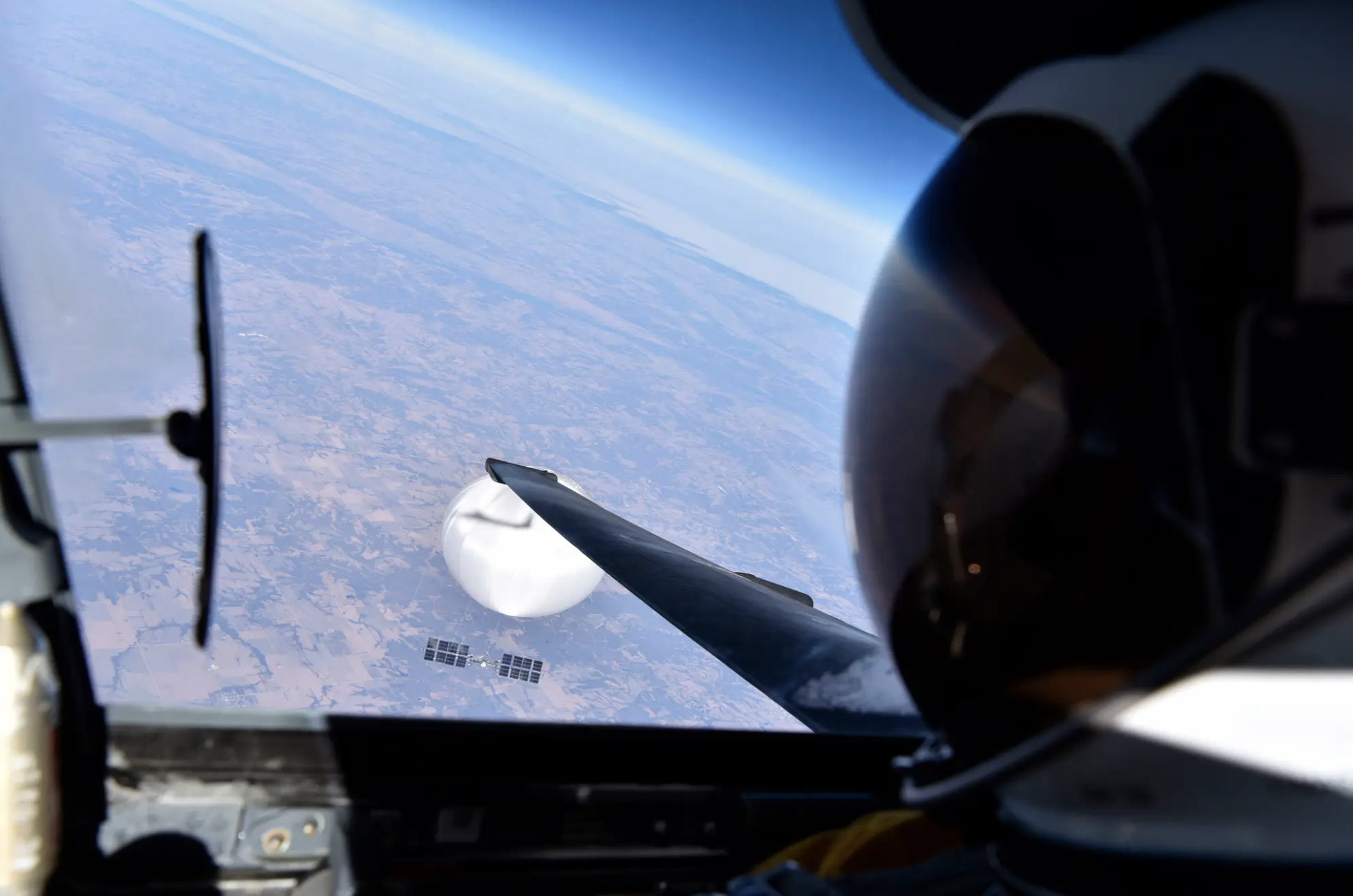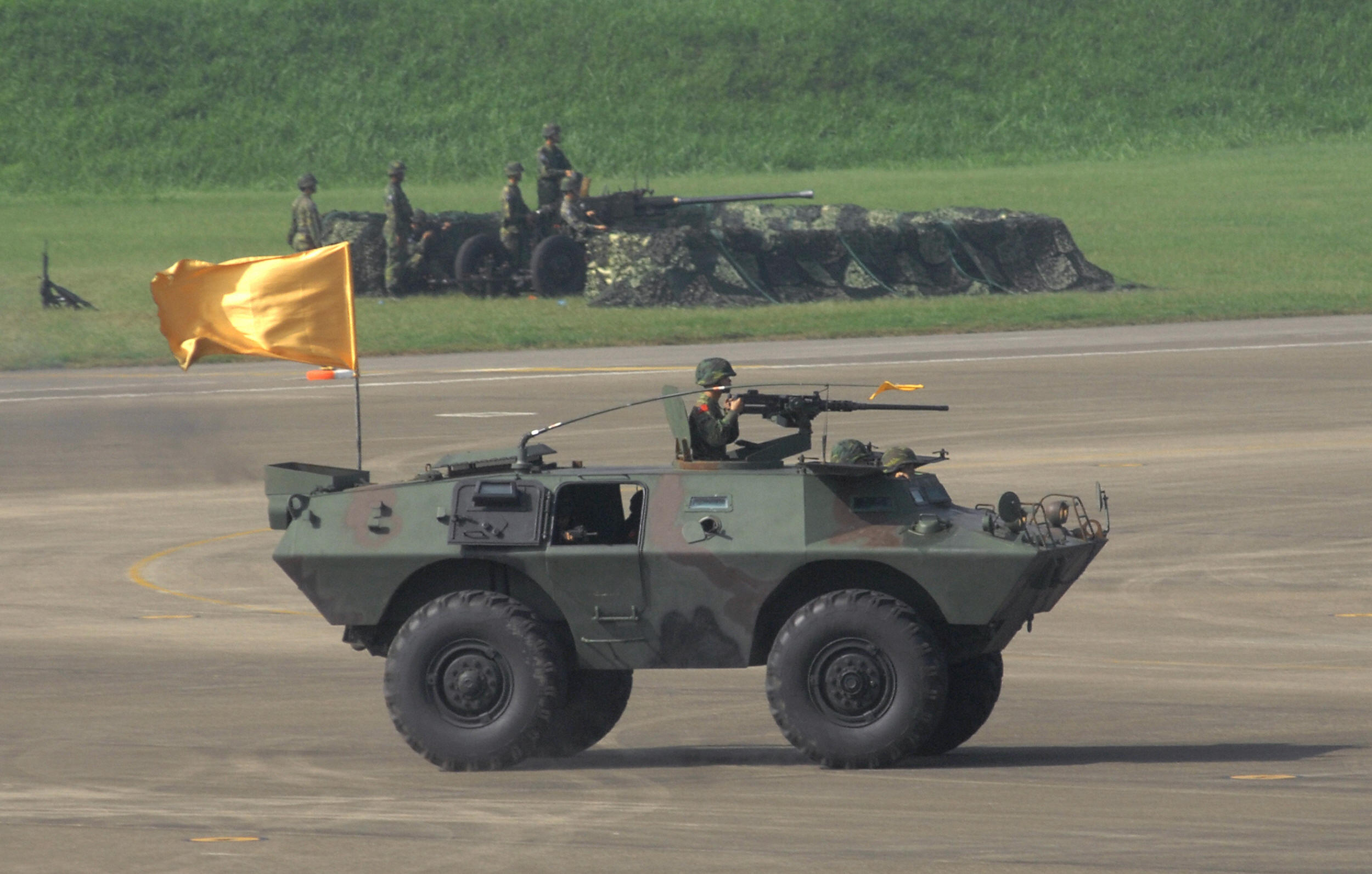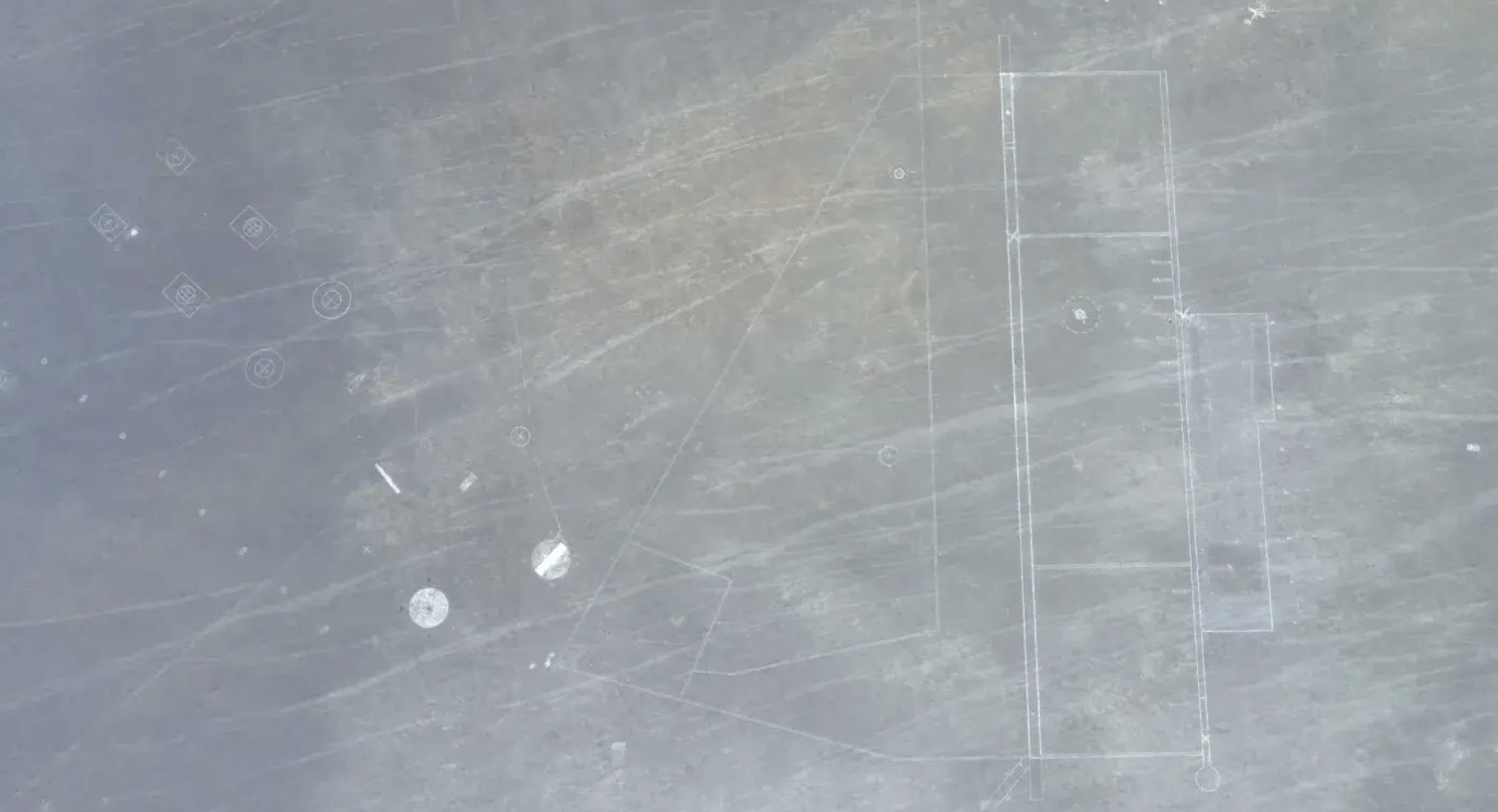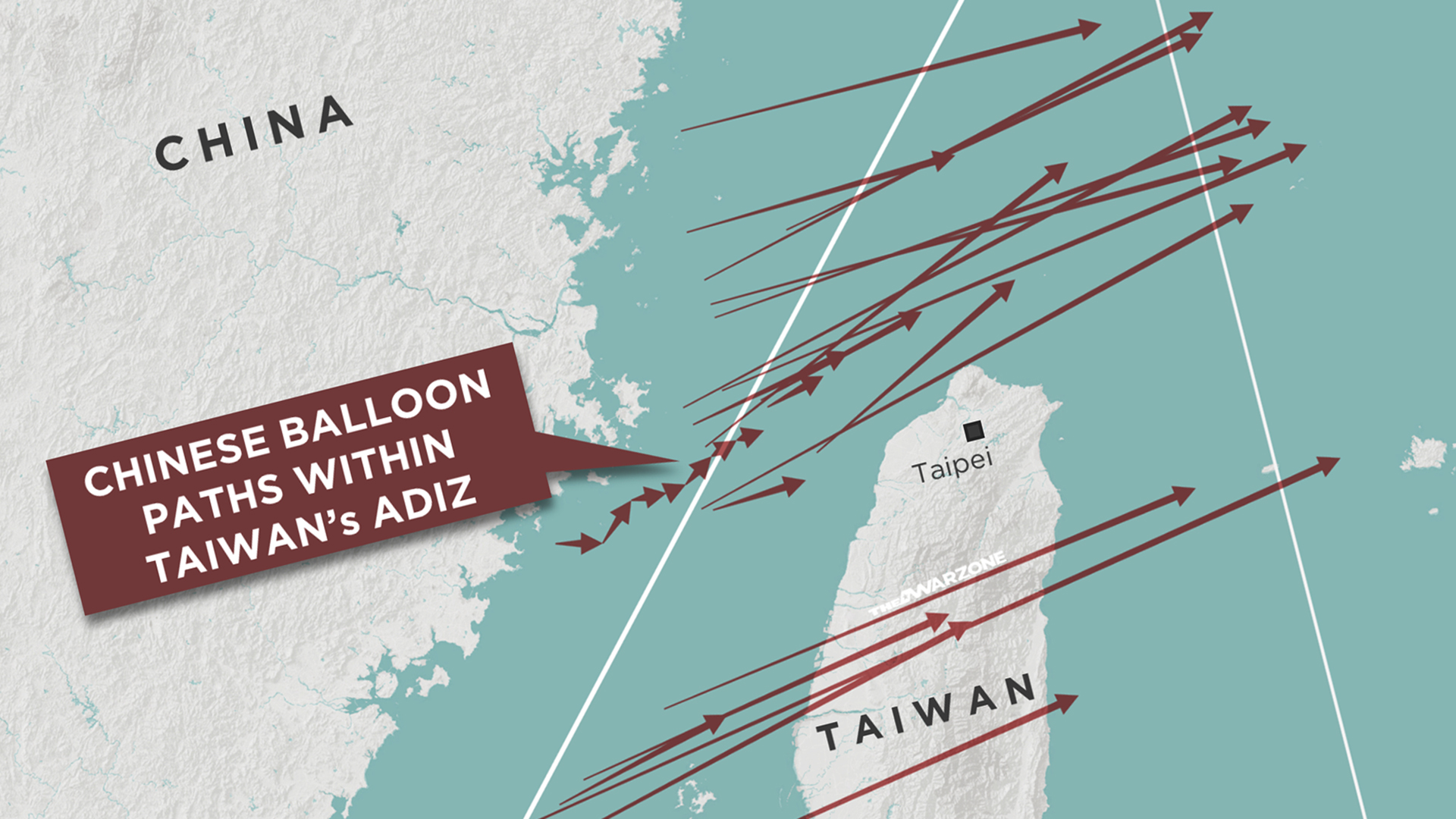High-altitude balloons, launched by China, are once again in the headlines, this time with a spate of sightings over and around Taiwan. Tensions between the island and Beijing are already strained, with elections due later this week. As a result of the recent spike in balloon flights, Taiwan has accused China of psychological warfare as well as threatening international aviation safety in the region.
The incidents come close to a year after U.S. fighters had to shoot down a total of four high-flying aerial objects in American and Canadian airspace, including one identified as a Chinese government surveillance balloon.
A graphic prepared for The War Zone by @detresfa_ shows the flightpaths of Chinese balloons launched toward Taiwan in the last month:

The Taiwanese Ministry of Defense has reported several instances of Chinese balloons flying over the highly strategic Taiwan Strait since last month. At the start, these flights appeared to be sporadic, with the balloons remaining off Taiwan’s coast.
But there has been a surge in activity in more recent days, with balloons now passing over Taiwan itself.
The defense ministry in Taipei said it detected three Chinese balloons over the Taiwan Strait on Sunday. All three craft are said to have flown over the so-called Median Line in the Strait, after which one of the balloons are then claimed to have crossed the island, at its southernmost tip.
The Median Line serves as a de-facto boundary between Taiwan and the mainland. While crossing the median line is not an uncommon occurrence, as we have discussed in the past, the regularity of such flights, mainly by crewed aircraft and drones, continues to cause concerns. Beijing refutes the existence of the Median Line.
Saturday saw Taiwan announce that two other Chinese balloons had been detected in the previous 24 hours. One of these craft is said to have flown briefly over the far northern tip of the island.
In the past, however, Taiwanese officials have said that the balloon flights from the mainland were related to weather reconnaissance, their presence over and around Taiwan being explained by the balloons drifting with the prevailing winds.
Now, especially since the weekend, Taiwan is taking a much more assertive stance.
On Saturday, the Taiwanese Ministry of Defense issued a statement declaring that the balloons were a “serious threat” to international aviation safety, due to their flight paths.
“We also express our condemnation of the Chinese communists’ disregard for aviation safety and its disregard for the safety of passengers on cross-Taiwan Strait and international flights,” the ministry added.
The statement added that the balloons were being deployed “in an attempt to use cognitive warfare to affect the morale of our people,” as part of China’s “gray zone” tactics. These have been described by the Pentagon in the past as occupying “the ambiguous no-man’s-land between peace and war, reflecting the sort of aggressive, persistent, determined campaigns characteristic of warfare but without the overt use of military force.”
Taiwan hasn’t provided evidence of the balloons being used for espionage activities, although the potential for them to spy on Taiwan is clear, especially given the nature of the incident involving a Chinese surveillance balloon over North America before it was shot down by a U.S. Air Force F-22 Raptor early last February. Beijing claimed that the balloon was a civilian craft that had accidentally drifted astray.

Possible evidence in favor of the balloons being used to gather intelligence on Taiwan is the claim that some of these craft that flew over Taiwan in the past week did so in proximity to undisclosed major airbases. Last week, Taiwan reported that three balloons were first detected 120 to 184 miles from Ching Chuan Kang Air Base in the city of Taichung, although they may well have continued to fly closer still.

The importance of this installation can be seen in the fact that the Chinese military built a full-size airbase in the country’s northwestern Gansu province modeled after Ching Chuan Kang Air Base, to serve as a bombing target for the People’s Liberation Army Air Force.

It’s significant that all this is being played out only days before Taiwan is due to go to the polls in presidential and parliamentary elections, scheduled for January 13.
There are concerns among Taiwanese officials that China is using the elections as an opportunity to interfere in politics on the island and has not ruled out additional military activities on Beijing’s part.
Lai Ching-te, presidential candidate for Taiwan’s Democratic Progressive Party (DPP), said that China was using its armed forces, as well as fake news, to “divide Taiwan.” He urged voters to ensure “that Taiwan will not surrender to an authoritarian regime but will continue to choose democracy and freedom.”

Today, the DPP’s vice-presidential candidate, Hsiao Bi-khim, accused China of harassing Taiwan.
“We do not welcome the use of intimidation and threats to interfere with the lives of Taiwan’s people at any time,” she said. “Not only this week, we hope peace and stability in the Taiwan Strait can continue for a long time.”
There is a precedent here, as well. Back in 1996, China undertook a series of missile tests and military drills that were seemingly targeted at disrupting Taiwan’s elections.
With Beijing viewing Taiwan as a breakaway province that must eventually be reunited with the People’s Republic of China (PRC), the use of balloons for espionage, psychological warfare, or both, would hardly be a surprise. It is notable, too, that the DPP is a particular thorn in the side of Beijing, due to what is seen as its hardline anti-PRC rhetoric and policies.
In the recent past, there has been notable heightened activity by People’s Liberation Army (PLA) aircraft and warships in the Taiwan Strait, and increasingly around the island itself, as a near-continuous reminder of the scale of the threat that the island faces, were Beijing to launch a military operation against it.
In the air, these activities have ranged from large-scale maneuvers by PLA aircraft around Taiwan, including training drills with the live firing of missiles and other weapons and even a virtual blockade, down to incursions by small drones over Taiwan’s outlying islands, some of which have been shot down.
A video taken by a Chinese drone over Kinmen County, Taiwan, shows Taiwanese troops throwing rocks at it, which emerged on social media in August 2022:

So far, the Chinese Ministry of Defense has not commented directly on the balloons.
Speaking in late December, a spokesman for the Chinese Ministry of Defense, Wu Qian, did not confirm or deny any balloon flights, but reiterated that Taiwan was a part of China and suggested that the DPP was using the issue cynically “to swindle votes.”
Meanwhile, Beijing’s Taiwan Affairs Office — responsible for policies related to the island — told Reuters that Taiwan’s DPP was “hyping up the threat from the mainland as the election approaches” and that it was being confrontational.
Speaking last week, U.S. National Security Council spokesperson John Kirby did not comment on the balloons.
“We obviously support the democracy and the democratic institutions of Taiwan, and we want to see free, fair, open, transparent elections there,” Kirby said. “We’re certainly mindful that outside actors could try to interfere.”
Taiwanese officials and the White House appear to be aligned in their concerns over the spike in Chinese balloon activity over and around Taiwan, especially in light of the forthcoming elections.
Whatever the degree of messaging involved in these current operations, the capabilities that surveillance balloons offer should not be discounted.
After all, China has a very active high-altitude balloon surveillance program that has been in operation for years now. In recent years, Chinese spy balloons have also reportedly passed over other parts of the United States on numerous occasions, with smaller balloons also being a threat. China’s balloon surveillance program is a global effort, with various other countries around the world also having been surveilled.
In the longer term, the threat of balloons with surveillance payloads being used to gather sensitive information from Taiwan is one that the island is very likely taking seriously. Payloads of said balloons could include electronic intelligence and even imaging sensors. The fact that they are so close to the mainland also means they can maintain line-of-sight links, or even make use of the cellular system in Taiwan, something that the Chinese surveillance balloon did over the United States.
The long history of balloons being used for intelligence collection, and the resurgence of these activities, is something we have covered in depth before the Chinese balloon incident over the U.S. Beyond direct surveillance, Chinese balloons could also be highly relevant to stimulating Taiwanese air defenses. There is a long history of using balloons to just this, a practice that continues today. Working passively as targets while China monitors Taiwan’s air defense response from afar would allow People’s Liberation Army forces to better understand the island’s air defense capabilities, locate critical emitters, and gain insights into air defense procedures, and help build up an up-to-date overall ‘electronic order of battle.’
Taiwan’s proximity to the mainland, and its strategic importance, make it a very obvious target for balloon surveillance, meaning such flights are very likely to continue, on whatever scale. As to other potential military maneuvers in the shorter term, that may well depend on the result of the election and especially how the DPP fares in the polls.
Contact the author: thomas@thedrive.com
